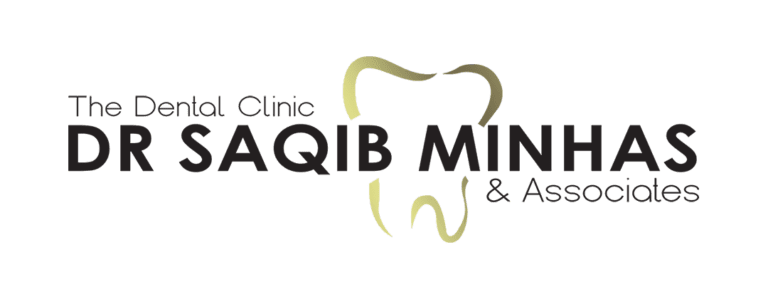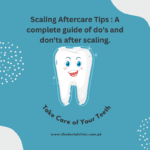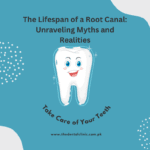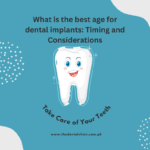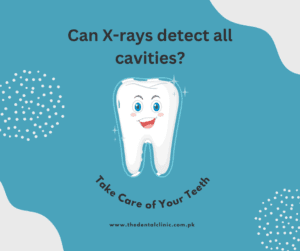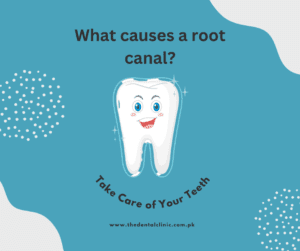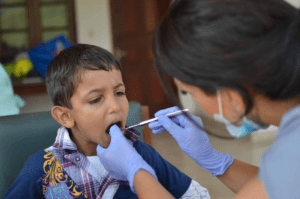Are Dental X-Rays Safe? Understanding the Benefits and Risks
Dental x-rays are used for diagnosing tooth damage and disease, which are not visible during routine dental check-ups. However, the frequency of x-rays depends on the patient’s oral health, age, risk factors, and any other signs and symptoms of oral disease. For example, children require x-rays more often compared to adults because of their developing jaw, more prone to tooth decay as well. The dentist reviews the patient’s history and decides whether you need x-rays or not.
X-rays are also called radiographs and enable the dentist to see a clear picture of the teeth and their surrounding structures. Moreover, dentists can see the conditions of your teeth, roots, jaw, and the composition of facial bone. They help in finding the root cause of dental problems and treating them.
Dental X-rays are safe. However, the radiation levels should be low, which makes the risks less harmful. The tools used for dental x-rays are designed in a way that limits the body’s exposure to radiation. Moreover, precautions are taken to ensure low radiation exposure based on the ALARA principle. A leaded apron or collar can also be used to prevent abdominal and thyroid exposure.
What are dental X-rays?
Dental X-rays, also referred to as dental radiographs, are diagnostic imaging techniques used in dentistry to capture images of the teeth, jawbone, and surrounding structures. These X-ray images provide valuable information to dentists, allowing them to detect and diagnose various dental conditions that may not be visible during a regular dental examination.
When you visit the dentist, your dentist may prescribe you an X-ray. Dental X-rays, i.e., radiographs of your teeth and jaws, will allow your dentist to inspect structures that are not visible during a regular dental check-up, including your jawbone, nerves, sinuses, and tooth roots.
How does Dental X-Ray Work?
When you visit The Dental Clinic for a routine checkup, the dentist will have x-rays done if needed. They usually comprise of two to four bitewing x-rays, which show the crown of the teeth and check for signs of decay. Bitewing x-rays are taken using a bite plate between your teeth and the x-ray machine is placed on either side of the plate.
Panoramic x-rays are taken outside the mouth and give the entire oral cavity image in one photo. The x-ray machine moves around the circumference during the x-ray to get a full head picture. This type of x-ray shows all your teeth, jaw bones, and sinuses. It is a great way to detect disorders of the jaw and any irregularities as well.
However, both x-ray types are painless and require only a few minutes. Moreover, the benefits are life-long.
Benefits of Dental X-Rays
Tooth Decay Diagnosis
Tooth decay is invisible to the naked eye in most cases and does not tend to show signs early on. Therefore, x-rays are important diagnostic tools that help in finding out whether someone has tooth decay. Early detection helps in planning and proceeding with inexpensive treatment. For example, reinforcement of dental hygiene, activation of re-mineralization agent for the prevention of further progression of tooth decay and simple fillings.
Infection Detection
Dental x-rays detect other problems as well, which are infection around the roots, bone loss around the tooth, and other pathological conditions. For example, cysts, tumours, and cancer. Hence, routine dental x-rays not only save the tooth but also save a life.
Early Detection
Early detection of dental problems can help deal with them before they become complex.
Potential Risks of Dental X-Rays
Although dental x-rays involve radiation, the risk of exposure is so low that they are considered safe for adults and children. If your dentist is using digital x-rays instead of developing their own films, the radiation exposure is even lower.
Moreover, a lead bib on the chest, abdomen and pelvic region can prevent unwanted radiation exposure to vital organs. A thyroid collar may also be used in case of thyroid conditions. In addition, if women who are pregnant need an x-ray done, they may also wear a lead bib.
However, pregnant women or women who think they are pregnant should avoid x-rays unless necessary. Always tell your dentist if you are pregnant because radiation is not safe for developing fetuses.
Safety of Dental X-Rays
Whether you’re a child or an adult, dental x-rays can be taken safely from inside and outside your mouth. The radiation is extremely low and equivalent to the exposure one can get in a 1–2-hour flight. Therefore, x-rays can be taken even during pregnancy. However, some patients are also concerned about why dentists leave the x-ray room. The reason is that they are exposed to x-rays of their patients all day, which is why they leave the room to limit their exposure.
The safety of dental x-rays is debatable. Moreover, it is very common for patients to avoid getting x-rays done because they fear radiation exposure.
Dental x-rays help dentists assess a patient’s oral health. They determine whether a patient has any problems with their gums or teeth. Moreover, the majority of patients get dental x-rays done once every year to check if everything is up to date in the mouth. However, if someone suffers from chronic and recurrent diseases of the oral cavity, for example, gum disease and oral infections, they may require more regular x-rays.
Dental x-rays are very safe and exposure to radiation is the main concern, which when performed properly shouldn’t be of concern. The procedures don’t give off high levels of radiation. Moreover, throughout the years, dental x-rays have been improved, which has also improved the safety level of the procedures.
Alternatives to Dental X-Rays
An intraoral camera can be used to detect early cavities. The high-intensity light and magnification can allow detecting the incipient or small caries. Moreover, dental trans-illumination is one step forward, which is a high-intensity light positioned next to the tooth. And since the enamel is a crystal-like structure, it is easier to detect defects in the enamel of the tooth. These defects include cavities, cracks, and damage to the teeth. This method enables dentists to examine teeth with lower exposure to radiation. In fact, this technique is very good for children because it reduces x-ray exposure and detects dental problems at their earliest stage.
Also Read: Why dental care is important?
Conclusion
Efficacy and sophistication are the most important safety precautions that are needed to be followed by your dental practitioner. Other things that need to be taken into consideration are minimizing radiation wherever possible. The precautions also include minimum x-rays to decrease radiation exposure and always speak to your dentist regarding this. Eventually, investing your time at a dental clinic with learned practitioners is your best bet at getting the right treatment.
If you have any concerns, speak to your dentist.
